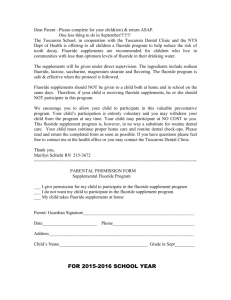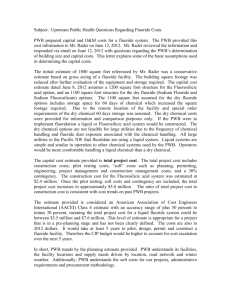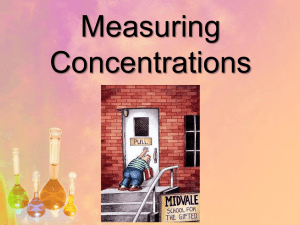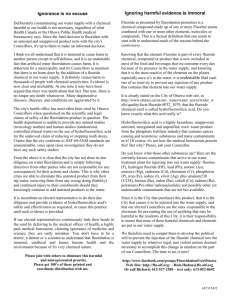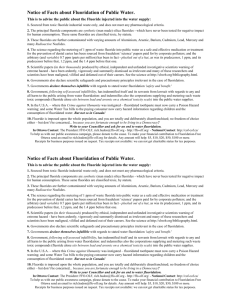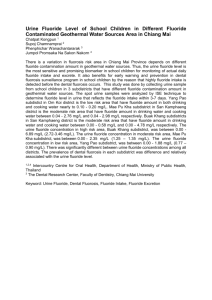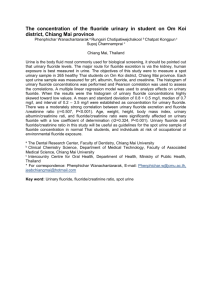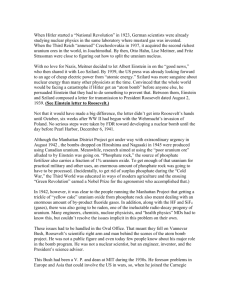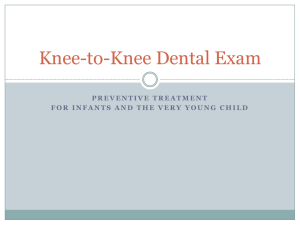Press Release For immediate release
advertisement
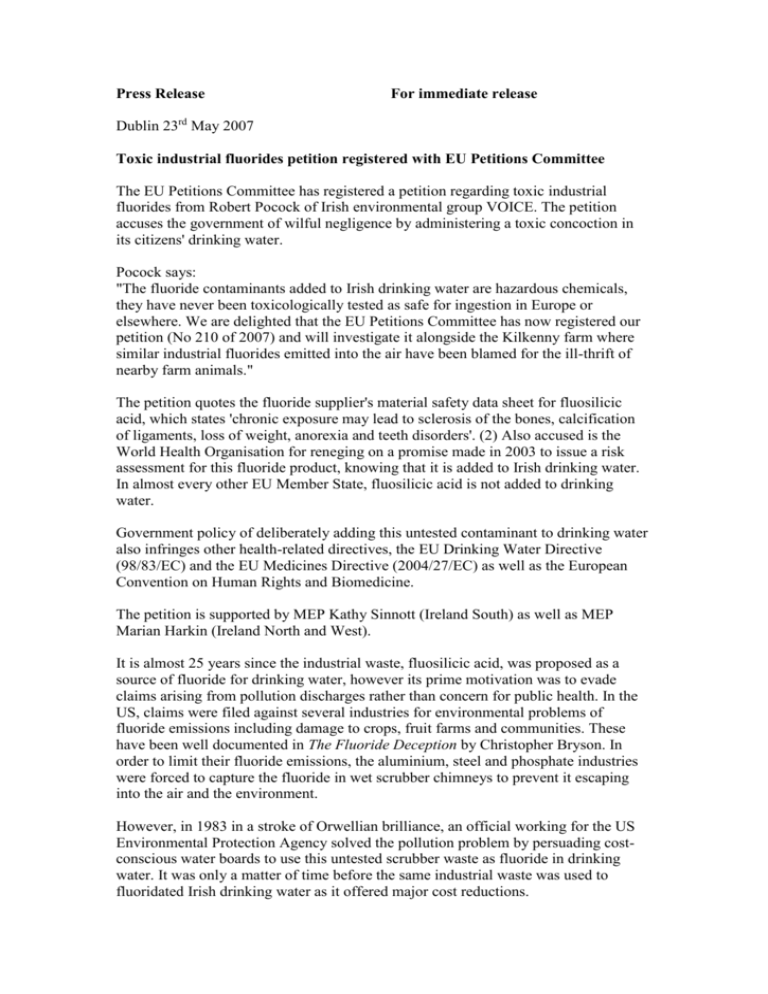
Press Release For immediate release Dublin 23rd May 2007 Toxic industrial fluorides petition registered with EU Petitions Committee The EU Petitions Committee has registered a petition regarding toxic industrial fluorides from Robert Pocock of Irish environmental group VOICE. The petition accuses the government of wilful negligence by administering a toxic concoction in its citizens' drinking water. Pocock says: "The fluoride contaminants added to Irish drinking water are hazardous chemicals, they have never been toxicologically tested as safe for ingestion in Europe or elsewhere. We are delighted that the EU Petitions Committee has now registered our petition (No 210 of 2007) and will investigate it alongside the Kilkenny farm where similar industrial fluorides emitted into the air have been blamed for the ill-thrift of nearby farm animals." The petition quotes the fluoride supplier's material safety data sheet for fluosilicic acid, which states 'chronic exposure may lead to sclerosis of the bones, calcification of ligaments, loss of weight, anorexia and teeth disorders'. (2) Also accused is the World Health Organisation for reneging on a promise made in 2003 to issue a risk assessment for this fluoride product, knowing that it is added to Irish drinking water. In almost every other EU Member State, fluosilicic acid is not added to drinking water. Government policy of deliberately adding this untested contaminant to drinking water also infringes other health-related directives, the EU Drinking Water Directive (98/83/EC) and the EU Medicines Directive (2004/27/EC) as well as the European Convention on Human Rights and Biomedicine. The petition is supported by MEP Kathy Sinnott (Ireland South) as well as MEP Marian Harkin (Ireland North and West). It is almost 25 years since the industrial waste, fluosilicic acid, was proposed as a source of fluoride for drinking water, however its prime motivation was to evade claims arising from pollution discharges rather than concern for public health. In the US, claims were filed against several industries for environmental problems of fluoride emissions including damage to crops, fruit farms and communities. These have been well documented in The Fluoride Deception by Christopher Bryson. In order to limit their fluoride emissions, the aluminium, steel and phosphate industries were forced to capture the fluoride in wet scrubber chimneys to prevent it escaping into the air and the environment. However, in 1983 in a stroke of Orwellian brilliance, an official working for the US Environmental Protection Agency solved the pollution problem by persuading costconscious water boards to use this untested scrubber waste as fluoride in drinking water. It was only a matter of time before the same industrial waste was used to fluoridated Irish drinking water as it offered major cost reductions. Pocock added: "This is the toxic scrubber liquor we want the Petitions Committee to investigate. The scandal of this situation is this hazardous chemical does not even originate here. Nine billion litres of Irish drinking water a day may have solved foreign pollution but at the risk of our population's health as well as the environment." ENDS For further information, contact Robert on 086 811 3071. (1) http://www.europarl.europa.eu/meetdocs/2004_2009/documents/cm/639/6396 38/639638en Petition 161/2006 Now registered as No 210 of 2007. (2) http://www.chemifloc.ie/msds/MSDS_Fluorosilicic_Acid.pdf (3) http://www.fluoridealert.org/news/2691.html One can determine the type of fluoride added to Minnesota's water by referencing a city's annual Consumer Confidence Report. Sauk Rapids boldly describes fluoride's source as "discharge from fertilizer and aluminium factories". EPA Office of Water Deputy Administrator Rebecca Hanmer qualifies this in a statement made in 1983: "In regard to the use of fluorosilicic acid as a source of fluoride for fluoridation, this agency regards such use as an ideal environmental solution to a longstanding problem. "By recovering by-product fluorosilicic acid from fertilizer manufacturing, water and air pollution are minimized, and water utilities have a low-cost source of fluoride available ..." This establishes fluoride as an environmental contaminant and identifies it as an industry by-product. Instead of fluoride polluting ecosystems, it is "safely" routed into water.

